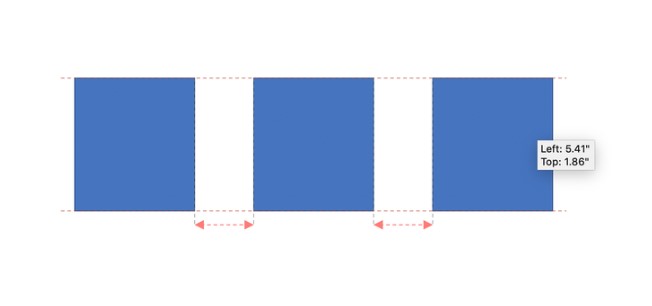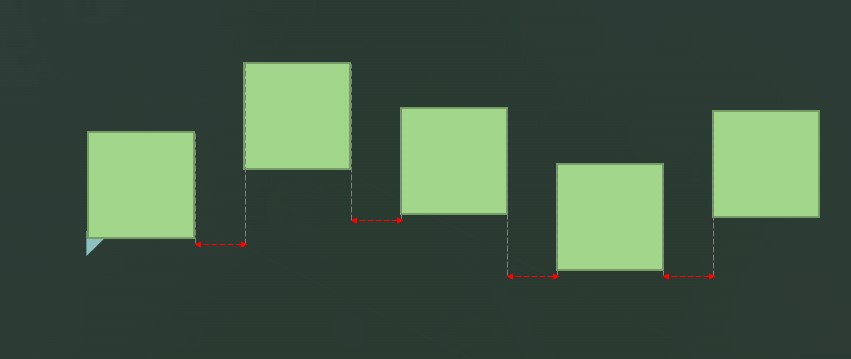Answer the question
In order to leave comments, you need to log in
What are the algorithms for finding equidistant rectangles?
I'm looking for an algorithm or library to draw connection lines between equidistant rectangles. I need to implement this feature in an editor written in javascript. All rectangles can be dragged and the algorithm should be as efficient as possible.
The end result of the implementation can be seen in some editors such as Keynote or PowerPoint. 

Important: the algorithm must calculate the points at which the rectangle will be equidistant relative to the nearest siblings. Thus, when dragging close to an equidistant point, it will be possible to magnetize the edge of the rectangle to that point.
I tried to implement the following algorithm:
Answer the question
In order to leave comments, you need to log in
Your algorithm just needs to be tweaked a bit.
1) find the nearest top (left/bottom/right) of those that have overlap.
2) repeat the operation, finding the next one on top. Take the distance between them as d.
3) keep going up. If the next closest one is also at distance d, draw a gap. If not, it will stop.
4) Knowing the nearest rectangle from point 1) and the distance d - you can retreat down and you have a magnetization point.
You can speed up the algorithm a bit. First, in one pass, select all the rectangles that are above the given one, but intersect with it along the X axis. Sort them from bottom to top by the bottom border. Now in paragraphs 1,2,3 it is necessary to consider only one next rectangle from the list.
If there are intersections, then you can either throw out the rectangles that intersect with the current one, or stop as if there is no next rectangle.
To speed it up even more, when you have a lot of rectangles on the screen, you can store them in a quad tree and pull out rectangles from it that overlap with the given one and above it in the correct order. But most likely just going through the list of all rectangles will be enough.
Build a grid to which you want to "magnetize" and when approaching it - push in the right direction.
Examples can be googled like this
Didn't find what you were looking for?
Ask your questionAsk a Question
731 491 924 answers to any question